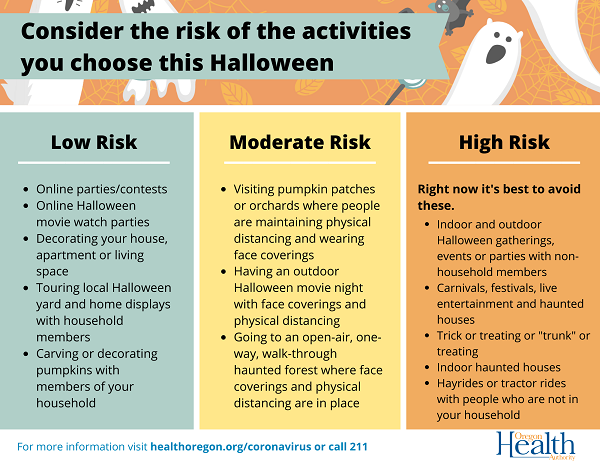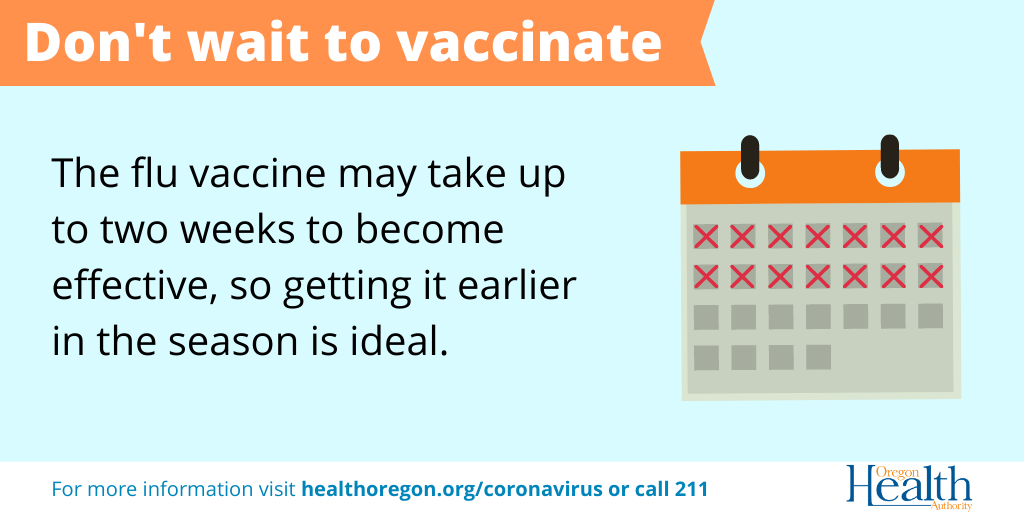|
Dear Friends and Neighbors,
Thanks to the commitment of Oregonians to follow social distancing guidelines, wear facial coverings, and practice common sense safety measures, Oregon closed out the summer with coronavirus cases trending in a downward direction. But over the past several weeks, we’ve seen a concerning trend across the state: coronavirus cases have been increasing at a rapid pace. We’ve seen a stretch that produced three straight days of 400+ positive test results, and yesterday, we surpassed 40,000 confirmed cases in the state.
While these developments are reason for concern, this upward trend is reversible. We’ve seen how effective Oregonians can be in slowing the spread of the coronavirus when we work together to keep our friends, family, and community safe. It’s more important than ever that we remember to take these basic steps, because they can make an enormous difference in curbing the spread of coronavirus.
In this newsletter, you will find the latest COVID-19 modeling from OHA, updated facial covering guidance, information about the state’s vaccination plan, and tips for a safe and fun Halloween.
As always, please contact my office if you have any questions or if you need any assistance.
Sincerely,
 Andrea Salinas, State Representative
The Latest Coronavirus Modeling
OHA released the latest COVID-19 modeling for the state of Oregon last Friday. The findings show there has been continued spread of COVID-19 in Oregon over the past several weeks and the spread has potential to continue to increase if transmission rates remain the same. This is a reversal of the positive trends we saw in August and mirror what Oregon saw in July, when community spread was commonplace.
OHA’s modeling considers three future scenarios with different assumptions about coronavirus transmission. The model begins on October 9 and concludes on November 5. The scenarios are as follows:
Transmission continues at its current level over the next month--Under this scenario, new infections and cases will increase substantially. It estimates there will be about 194,000 cumulative infections by November 5.
Transmission increases by 5-percentage points and continues at that rate over the next month--Under this scenario, COVID-19 outcomes increase dramatically. It estimates there will be about 211,000 cumulative infections by November 5.
Transmission decreases by 10-percentage points (to the estimated August level) and continues at that level over the next month--Under this scenario, COVID-19 outcomes will start to decrease again. It estimates there will be about 174,000 cumulative infections by November 5.
For more information about the model, and to see the number of daily infections, the number of newly diagnosed existing infections, and the number of severe cases there would be under each of the three scenarios, you can look at the full report here.
Moving into the fall and winter months, public health experts are tremendously concerned about the effect of small indoor social gatherings on the spread of coronavirus. This is one of the main reasons the modeling projects a steady increase of cases over the next month. Oregonians were able to gather and socially distance in the summer because warm weather allowed for small outdoor events, but as temperatures continue to drop, these social gatherings are going to move inside where transmission of COVID-19 is more likely.
In order to decrease the spread of the coronavirus and to prevent a dramatic surge of cases that the modeling spells out, we all must continue the common sense measures to keep ourselves and our community safe. That means wearing a mask, practicing social distancing, and frequent hand washing. These measures are tried and true and will help us prevent a winter surge.
Updated Mask Guidance
With coronavirus cases in Oregon at the highest point we’ve seen since the start of the pandemic, and models projecting a further increase, OHA issued updated statewide mask guidance on Monday to attempt to slow the rapid spread of COVID-19 across the state.
Face coverings are now required in all private and public workplaces, including classrooms, offices, meeting rooms, and workspaces, unless someone is alone in an office or in a private workspace.
Additionally, face coverings now must be worn at outdoor and indoor markets, street fairs, private career schools, and public and private colleges and universities.
As part of the updated guidance, it is not recommended that people wear a face shield instead of a mask or face covering. Face shields can be very good at blocking droplets that individuals release, but they are not as effective at limiting the release of aerosols that can go around the shield. Therefore OHA recommends only wearing a face shield in limited circumstances:
- If a person has a medical condition that prevents them from wearing a mask or facial covering.
- If a person needs to see tongue and mouth motions in order to communicate.
- If a person is speaking to an audience for a short period of time and clear communication is not otherwise possible.
To read more details about the new order, find the complete guidance from OHA here.
Halloween
Similar to other holidays this year, Halloween is going to look a bit different, but that doesn’t mean it can’t still be fun. To help you and your family plan your festivities, OHA created this graphic of possible considerations:
 OHA also hosted a conversation with public health physicians, Dr. Shimi Sharief and Dr. Claire Poche, to answer questions and offer additional tips on how to celebrate Halloween safely. Recordings of the talk are available in either English or Spanish.
English link: https://www.youtube.com/watch?v=dPn6fT6BrcQ&feature=youtu.be
Spanish link: https://www.facebook.com/OHAespanol/videos/615162715827994
COVID-19 Vaccination Plan
On October 16, OHA submitted a draft COVID-19 vaccination plan to the CDC that details how they will allocate and distribute a COVID-19 vaccine in Oregon as soon as a safe and effective vaccine becomes available.
Oregon’s plan to allocate and distribute a COVID-19 vaccine centers on health equity and follows federal guidance for a phased approach. Vaccinations will start with critical groups, including those involved in the pandemic response and people at the highest risk of getting sick. Once the vaccine is more widely available, it will be distributed to other high risk groups and the rest of the general public.
The plan that OHA submitted last Friday is not final. It is expected to evolve as more is learned about likely vaccines, including safety, effectiveness, side effects, storage, supply, distribution, and administration.
You can read the first draft of the COVID-19 vaccination plan here.
Flu Vaccine and COVID-19
As COVID-19 continues to spread in Oregon, OHA is urging everyone who is 6 months and older to get their annual flu shot. It is still unclear how the pandemic will impact flu season, but OHA and the CDC are preparing for COVID-19 and the seasonal flu to spread at the same time. This “twindemic” of two dangerous viruses in circulation at once could have a severe impact on the health of our community and place an enormous burden on the state’s health care system.
It may take up to two weeks for the flu vaccine to become effective, so it is important to get vaccinated as soon as possible. You can get your flu shot through your healthcare provider, local health departments, and many pharmacies. Locate a flu vaccine clinic here.
For more information on the 2020-21 flu season, visit OHA’s Flu Prevention website here.

email: Rep.AndreaSalinas@oregonlegislature.gov I phone: 503-986-1438
address: 900 Court St NE, H-485, Salem, OR, 97301
website: http://www.oregonlegislature.gov/salinas
|